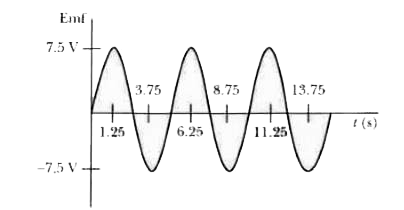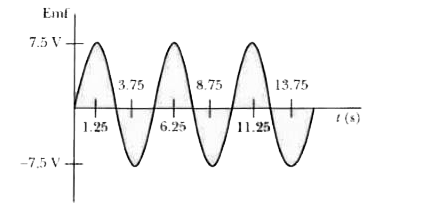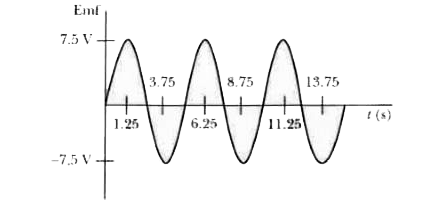PRACTICE QUESTIONS (Linked Comprehension) from RESNICK AND HALLIDAY PHYSICS Chapter 10 ELECTROMAGNETIC INDUCTION for Class 12
| Class 12 | PHYSICS |
| Chapter | ELECTROMAGNETIC INDUCTION |
| RESNICK AND HALLIDAY PHYSICS | PRACTICE QUESTIONS (Linked Comprehension) |
| Medium | English |
| Academic Year | 2023-2024 |
Question 1
The figure shows a uniform, 3.0 T magnetic field that is normal to the plane of a conducting, circular loop with a resistance of 1.5 Ω and a radius of 0.024 m. The magnetic field is directed out of the paper as shown . Note: The area of the non-circular portion of the wire is considered negligible compared to that of the circular loop.
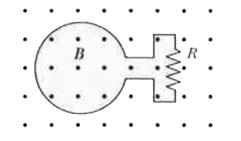
What is the magnitude of the average induced emf in the loop if the magnitude of the magnetic field is doubled in 0.4 s?View SolutionQuestion 2
The figure shows a uniform, 3.0 T magnetic field that is normal to the plane of a conducting, circular loop with a resistance of 1.5 Ω and a radius of 0.024 m. The magnetic field is directed out of the paper as shown . Note: The area of the non-circular portion of the wire is considered negligible compared to that of the circular loop.

What is the average current around the loop if the magnitude of the magnetic field is doubled in 0.4 s?View SolutionQuestion 3
The figure shows a uniform, 3.0 T magnetic field that is normal to the plane of a conducting, circular loop with a resistance of 1.5 Ω and a radius of 0.024 m. The magnetic field is directed out of the paper as shown . Note: The area of the non-circular portion of the wire is considered negligible compared to that of the circular loop.
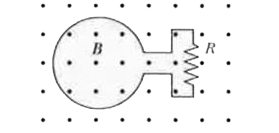
If the magnetic field is held constant at 3.0 T and the loop is pulled out of the region that contains the field in 0.2 s, what is the magnitude of the average induced emf in the loop?View SolutionQuestion 4
The figure shows a uniform, 3.0 T magnetic field that is normal to the plane of a conducting, circular loop with a resistance of 1.5 Ω and a radius of 0.024 m. The magnetic field is directed out of the paper as shown . Note: The area of the non-circular portion of the wire is considered negligible compared to that of the circular loop.
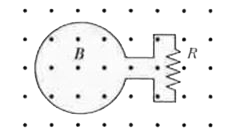
If the magnetic field is held constant at 3.0 T and the loop is pulled out of the region that contains the field in 0.2 s, at what rate is energy dissipated in R?View SolutionQuestion 5
A flexible circular loop 20cm in diameter lies in a magneic field with magnitude 1.0T, direction lies into the plane of the page as shown in Fig. 3.187. The loop is pulled at the points indicated by the arrws, forming a loop of zero area in 0.314s.
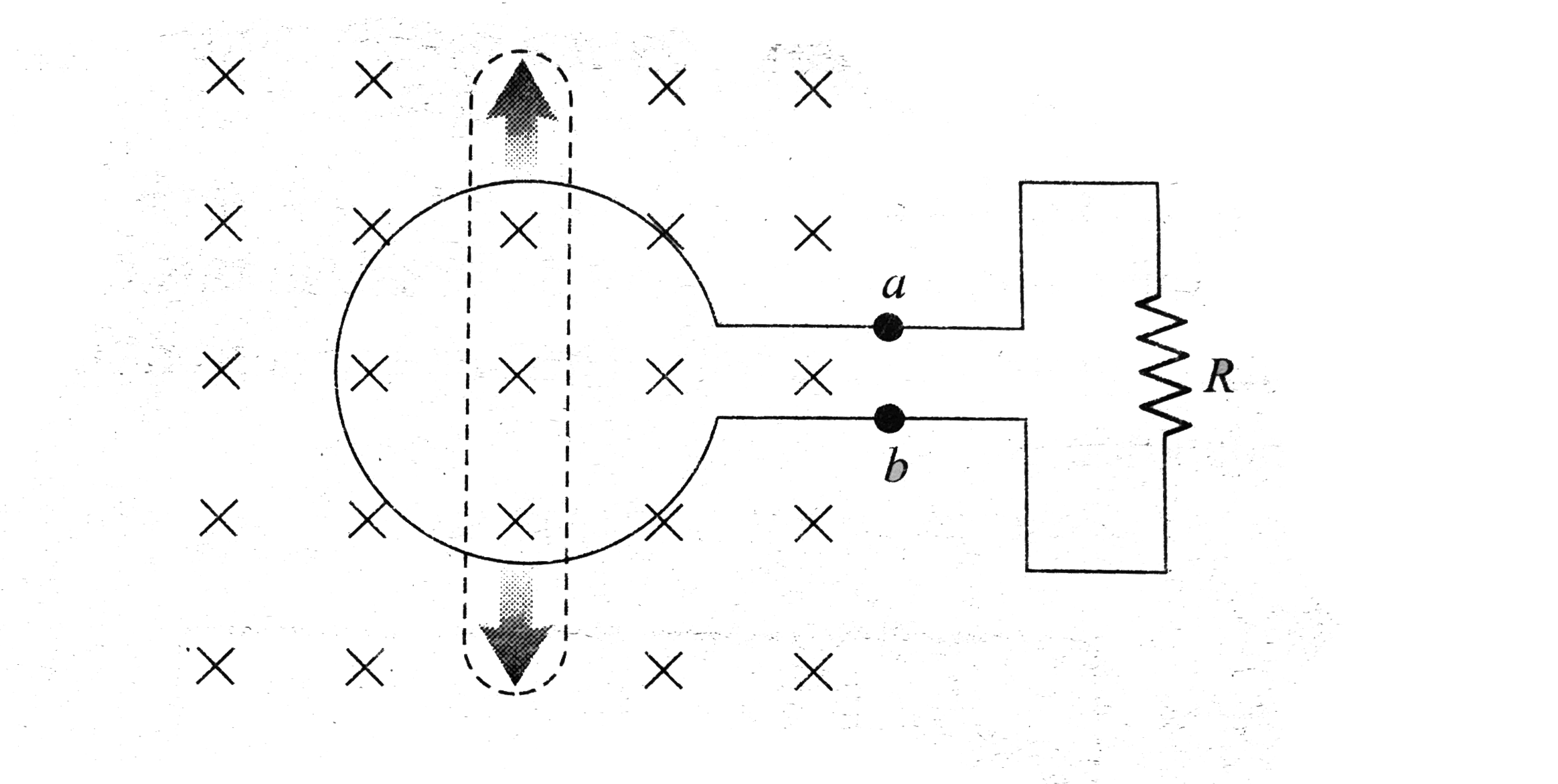
The average induced emf in the circuit is View SolutionQuestion 6
A flexible circular loop 20cm in diameter lies in a magneic field with magnitude 1.0T, direction lies into the plane of the page as shown in Fig. 3.187. The loop is pulled at the points indicated by the arrws, forming a loop of zero area in 0.314s.
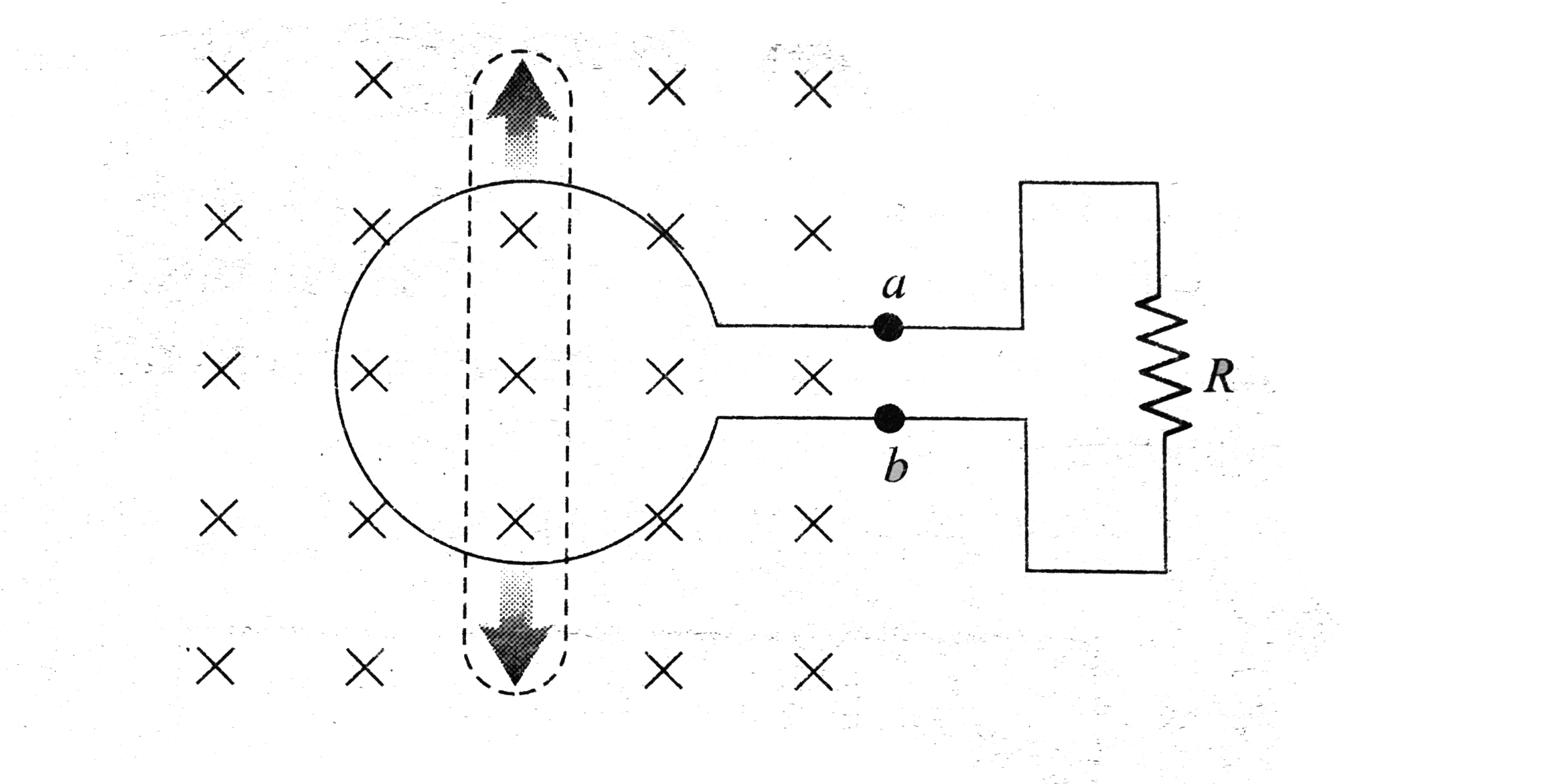
if R=0,01Ω, the magnitude and direction of current flowing in the loop areView SolutionQuestion 7
A wire loop enclosing a semicircle of radius R is located on the boundary of a uniform magnetic field B. At the moment t=0, the loop is set into rotation with constant angular acceleration α about an axis O. The clockwise emf direction is taken to be positive.
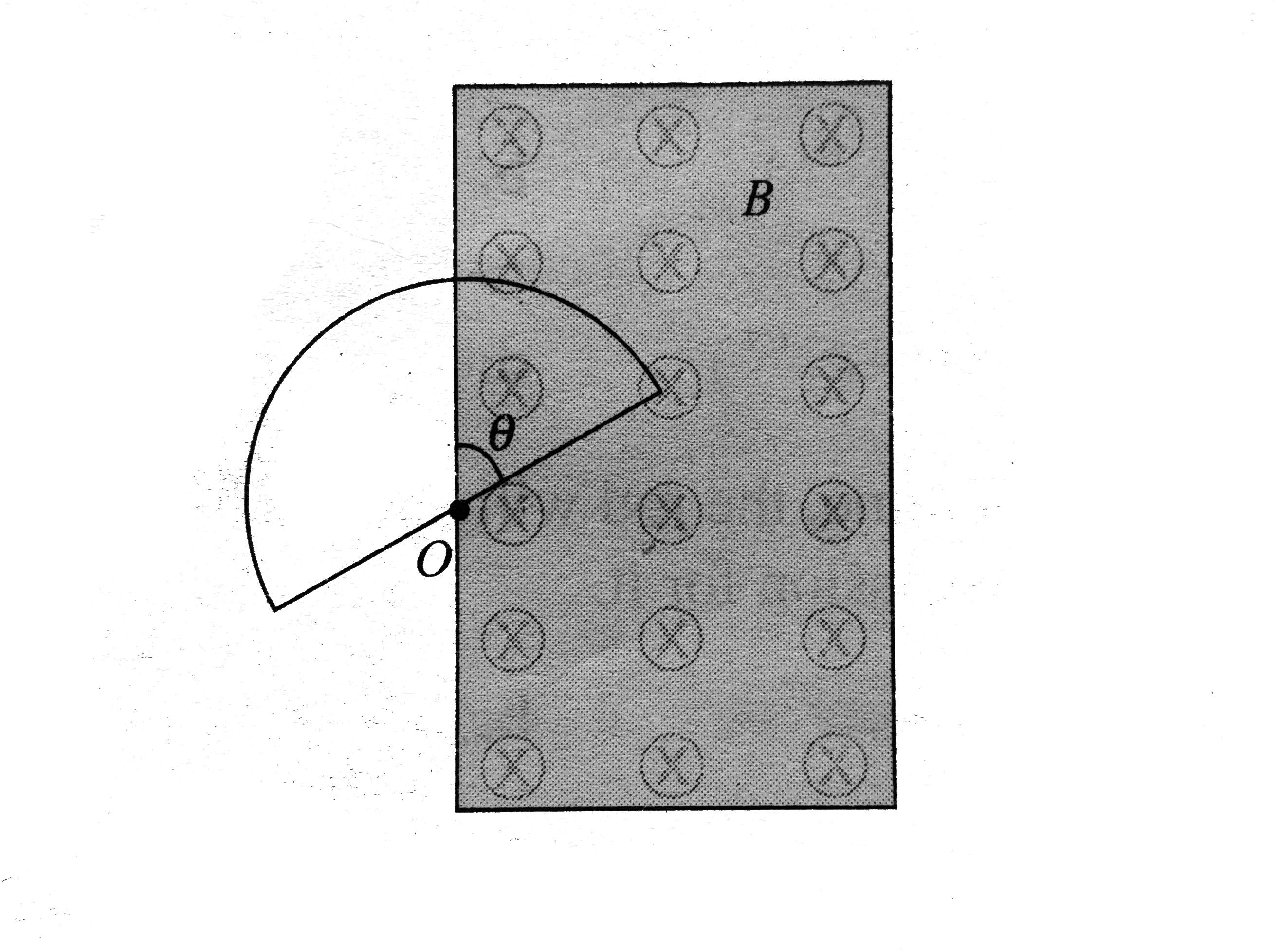
The variation of emf as function of time is View SolutionQuestion 8
A wire loop enclosing a semicircle of radius R is located on the boundary of a uniform magnetic field B. At the moment t=0, the loop is set into rotation with constant angular acceleration α about an axis O. The clockwise emf direction is taken to be positive.
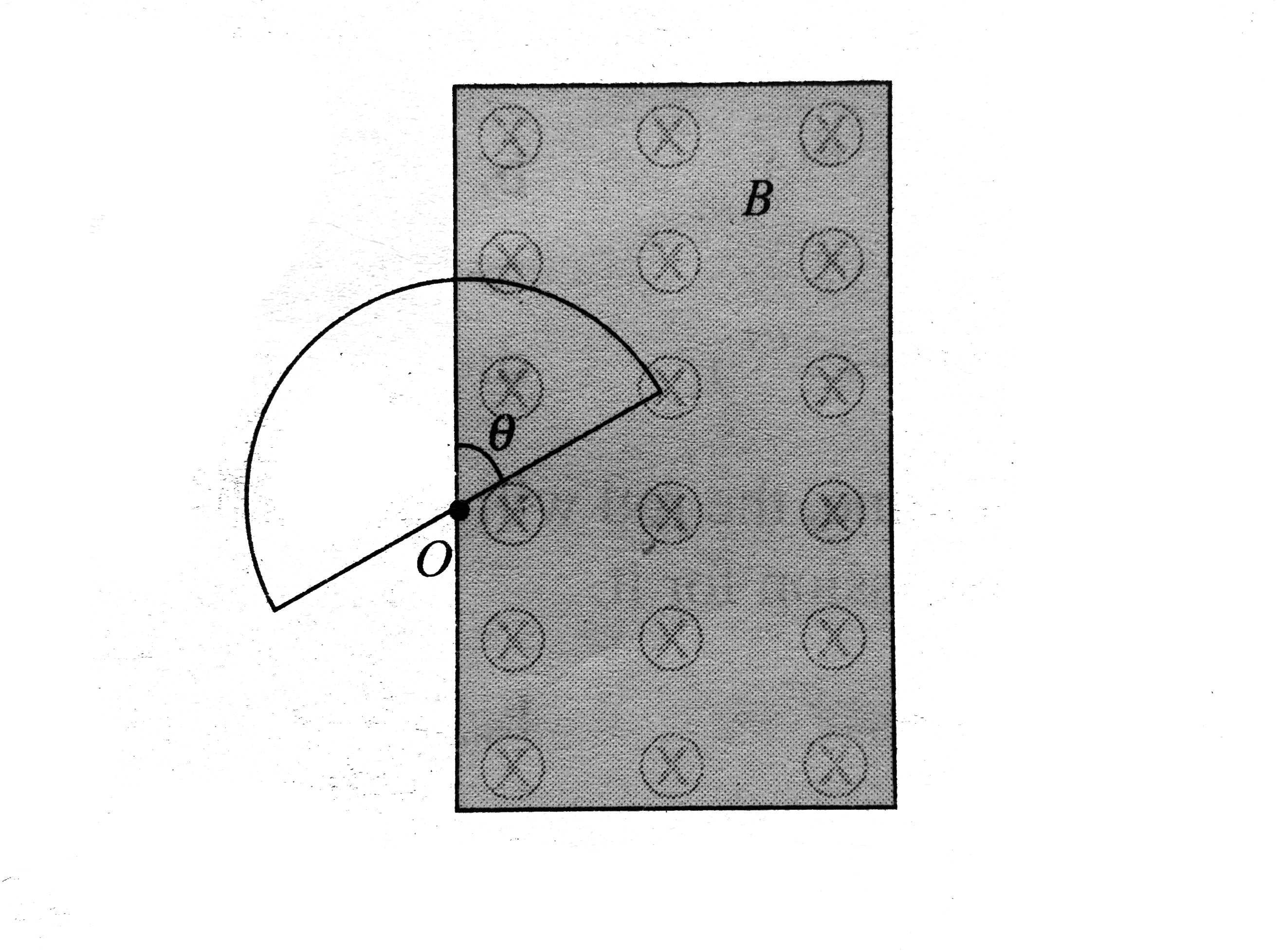
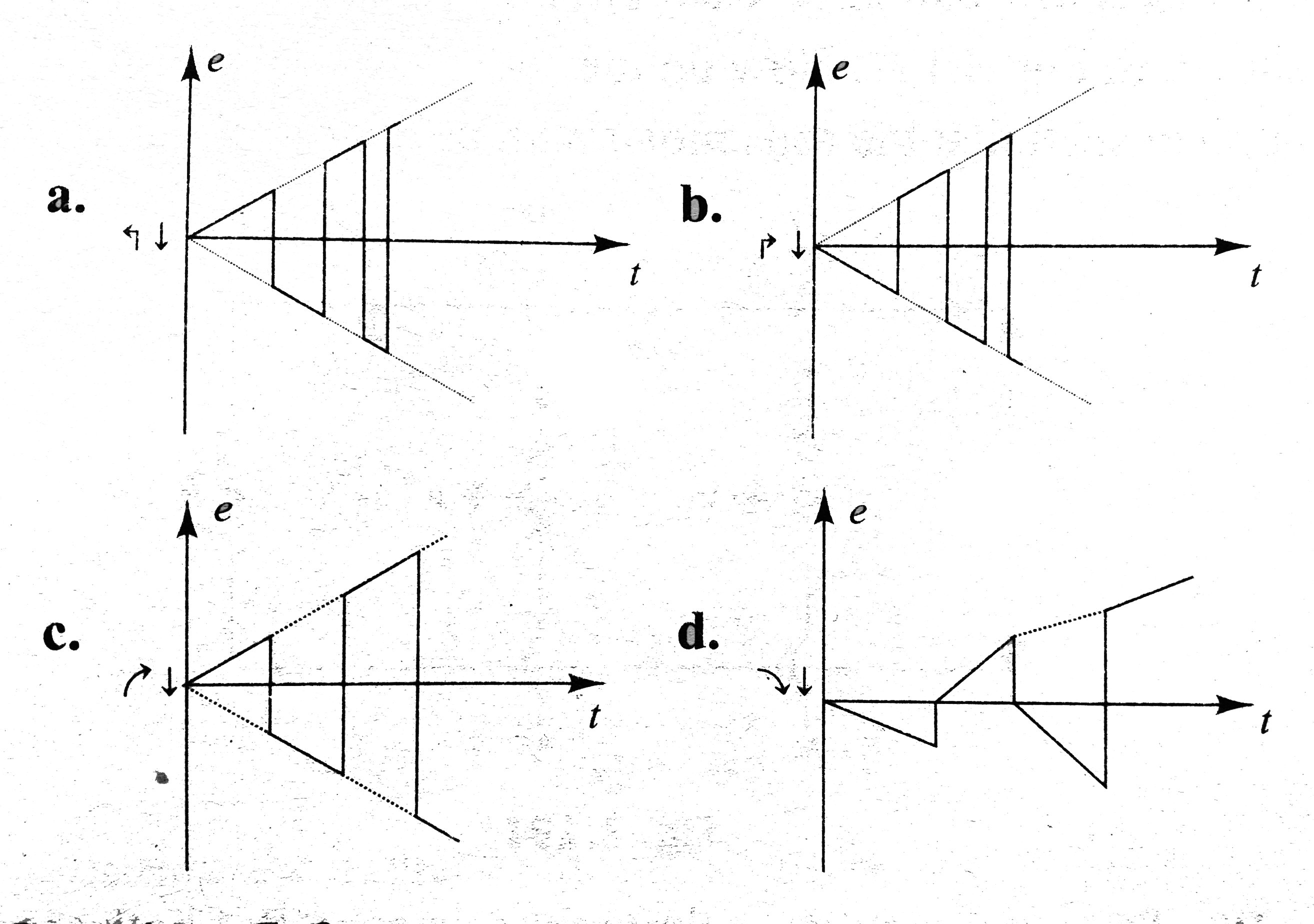
The variation of emf as a function of time is View SolutionQuestion 9
Figure. shows two parallel and coaxial loops. The smaller loop (radius r) is above the larger loop (radius R), by distance x>>R. The magnetic field due to current i in the larger loop is nearly constant throughout the smaller loop. Suppose that x is increasing at a constant rate of dx/dt=v.
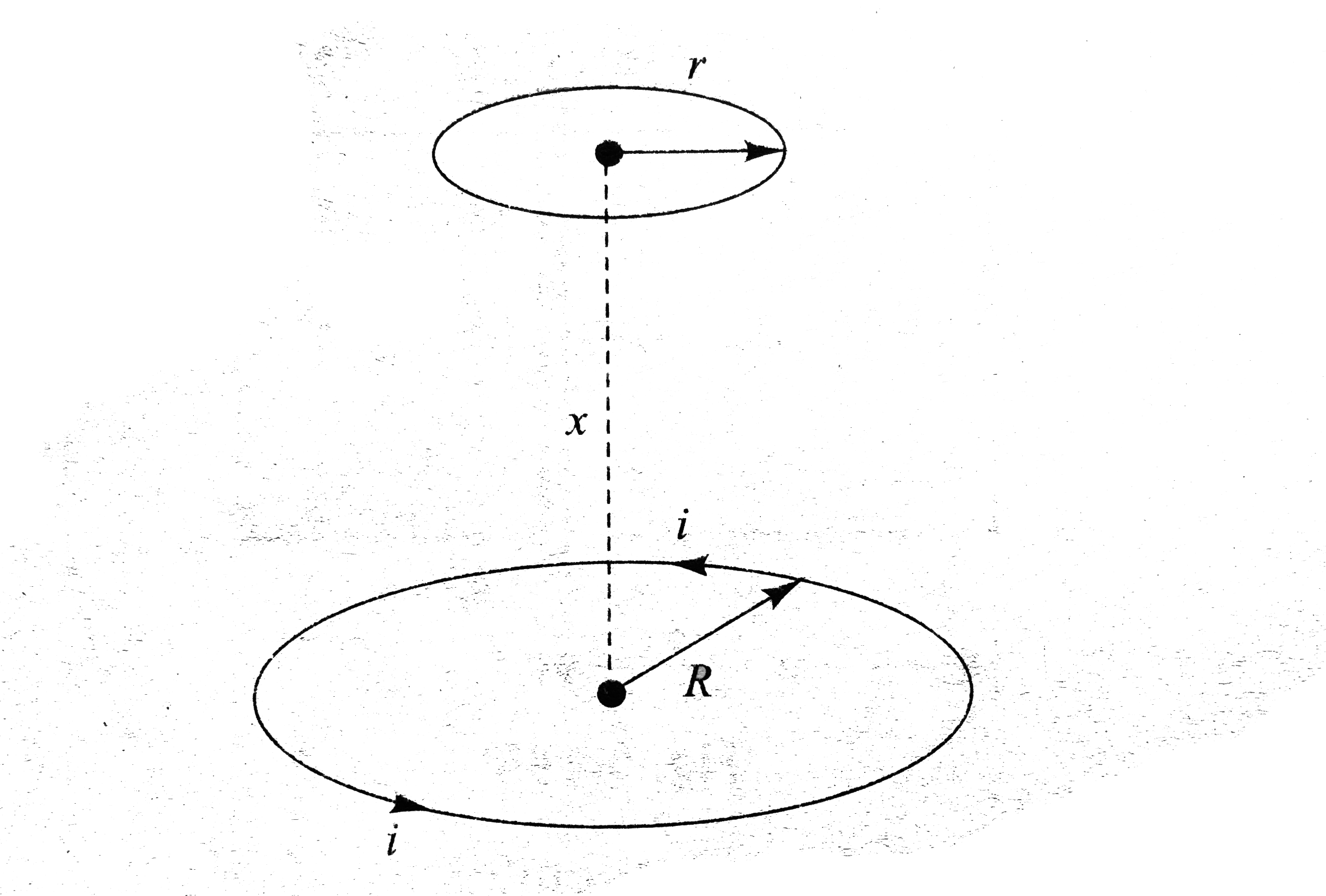
Determine the magnetic flux through the smaller loop as a function of x. View SolutionQuestion 10
Figure 3.188 shows two parallel and coaxial loops. The smaller loop (radius r) is above the larger loop (radius R), by distance x>>R. The magnetic field due to current i in the larger loop is nearly constant throughout the smaller loop. Suppose that x is increasing at a constant rate of dx/dt=v.

The induced emf in the smaller loop is View SolutionQuestion 11
In a conventional vehicle, power is dissipated due to friction . To reduce the loss of power due to friction MAGLEV train using an LEDS (electrodynamic suspension) technology was developed. It works on the principle of Lenz's law. In this system, a train moves without contact with the track due to which there is no loss of power due to friction.
The advantage of EDS is thatView SolutionQuestion 12
In a conventional vehicle, power is dissipated due to friction . To reduce the loss of power due to friction MAGLEY train using an EDS (electrodynamic suspension) technology was developed. It works on the principle of Lenz's law. In this system, a train moves without contact with the track due to which there is no loss of power due to friction.
Which of the following statements about MAGLEV train is correct?View SolutionQuestion 13
In a conventional vehicle, power is dissipated due to friction . To reduce the loss of power due to friction MAGLEV train using an LEDS (electrodynamic suspension) technology was developed. It works on the principle of Lenz's law. In this system, a train moves without contact with the track due to which there is no loss of power due to friction.
The disadvantage of LEDS is thatView SolutionQuestion 17
A 0.100 m long solenoid has a radius of 0.050 m and 1.50×104 turns. The current in the solenoid changes at a rate of 6.0 A/s. A conducting loop of radius 0.0200 m is placed at the center of the solenoid with its axis the same as that of the solenoid as shown.

What is the magnetic flux through the small loop when the current through the solenoid is 2.50 A?View SolutionQuestion 18
A 0.100 m long solenoid has a radius of 0.050 m and 1.50×104 turns. The current in the solenoid changes at a rate of 6.0 A/s. A conducting loop of radius 0.0200 m is placed at the center of the solenoid with its axis the same as that of the solenoid as shown.
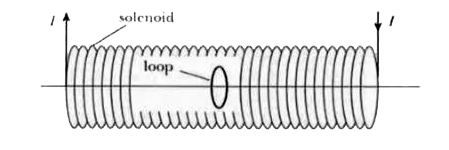
Determine the mutual inductance of this combination.View SolutionQuestion 19
A 0.100 m long solenoid has a radius of 0.050 m and 1.50×104 turns. The current in the solenoid changes at a rate of 6.0 A/s. A conducting loop of radius 0.0200 m is placed at the center of the solenoid with its axis the same as that of the solenoid as shown.

Determine the induced emf in the loop.View Solution

